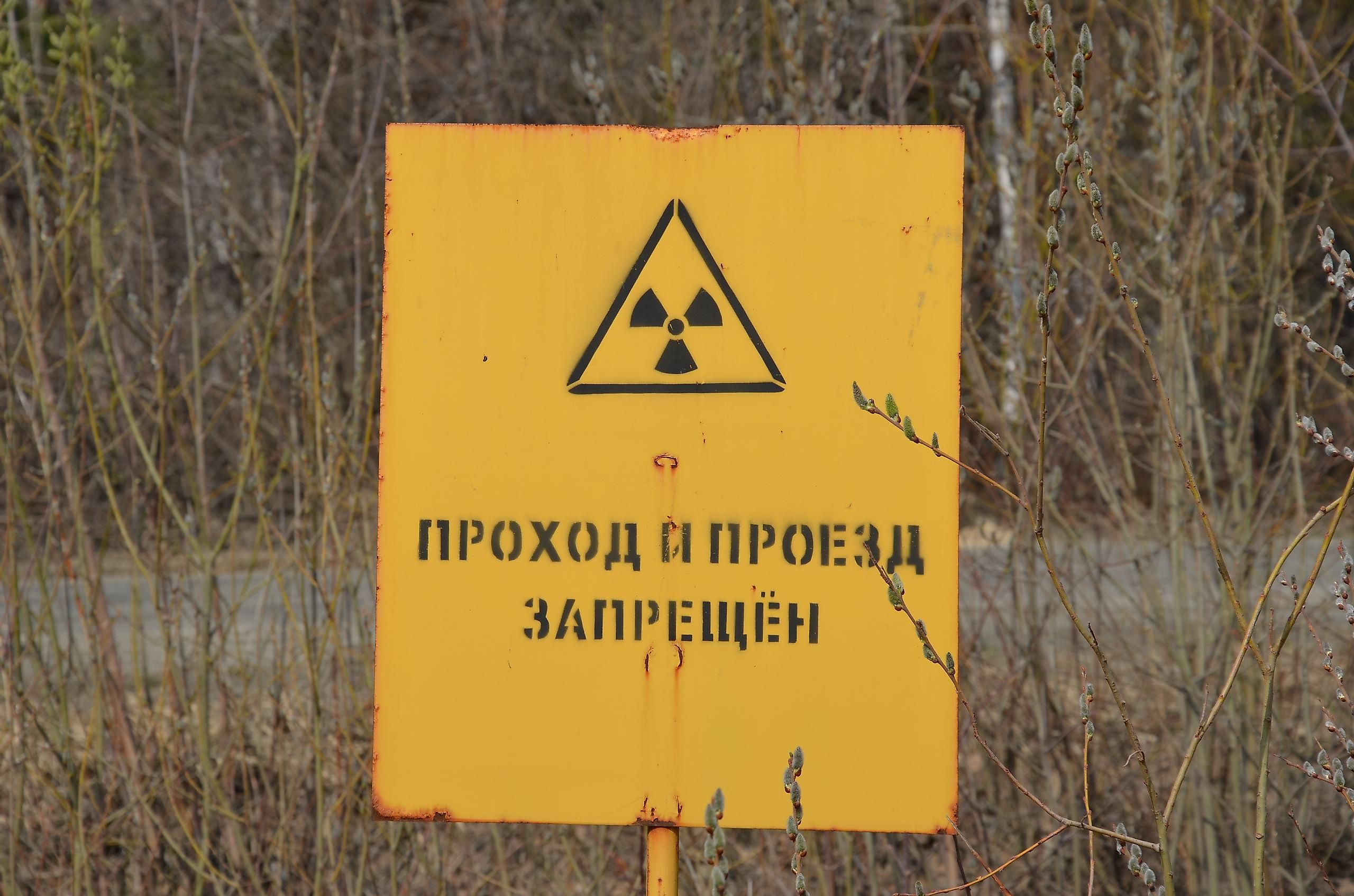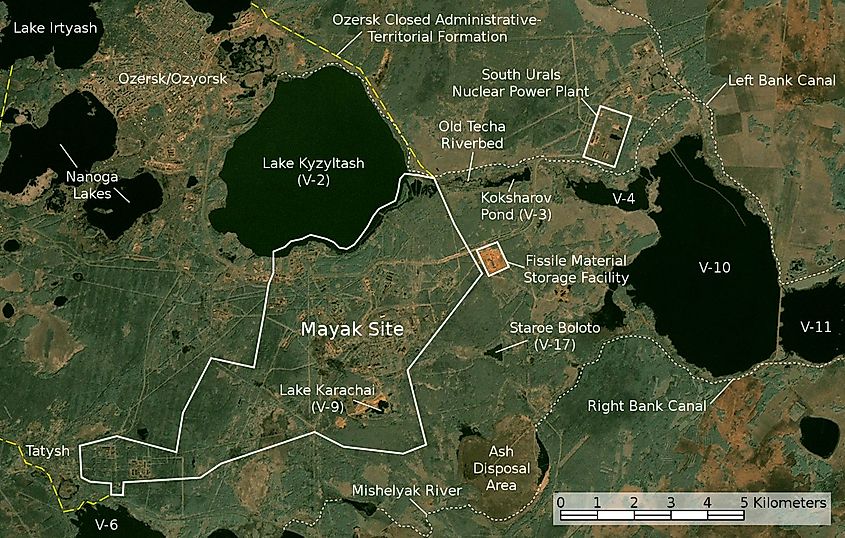
Lake Karachay
Lake Karachay, also known as Karachaj or Karachai, is located in Russia’s Chelyabinsk Region in Southern Ural Mountains, near the border with Kazakhstan. The lake is considered one of the most polluted places on Earth because of the nuclear weapons and other radioactive wastes dumped there between 1951 and 1953. The lake was used as a nuclear waste storage facility but is currently is filled with hollow concrete and acts as a permanent radioactive waste storage facility. The radioactive waste in the lake presents an ecological problem and pollutes the air and underground water. The lake derives its name from the Turkic word “karachay” meaning “black creek” or "black water.”
History of the Lake’s Pollution

Mayak, located in the north Chelyabinsk region, near the towns of Ozyorsk and Kyshym, is one of Russia’s largest nuclear facilities. The nuclear processing facility was secretly built between 1946 and 1948 and was only known to the public in 1990. The area was opened for public access in 1992 after President Boris Yeltsin’s decree. The plant supported the Soviet atomic project and was the first facility to create plutonium in Russia. The work at the facility followed the Stalinist procedure, with Lavrenti Beria as the supervisor.
Stalin aimed to produce enough nuclear weapons to match the United States at the time. However, the activities at Mayak became the contamination source in northern Chelyabinsk and the Ural region. The radioactive pollution was caused mainly by a lack of nuclear technology, lack of knowledge about the effects of radioactive material on the environment, and lack of a safe method of waste disposal. Workers’ safety and welfare were given little to no consideration.
In October 1951, the Mayak plant began using Lake Karachay to store nuclear wastes to stop them from getting into the Techa River. The lake was nearer to the facility than Lake Kyzyltash and was a designated dumping ground for large quantities of radioactive wastes because it could not provide sufficient cooling water. Until 1957, Lake Karachay was used to store hot radioactive material, which was later returned to the facility’s underground storage vats. However, the underground vats exploded and contaminated the entire Mayak and nearby areas. After the explosion, the administration took greater caution and spread the dumping grounds to several areas, including Lake Karachay.
The lake began dying in the 1960s, with its surface area dropping to 0.15 square kilometers in 1993, from 0.5 square kilometers in 1951. In 1968, the wind blew away exposed and contaminated silt away from the lake, with the dust affecting about 500,000 people.
Current Status
Lake Karachay is currently filled with concrete blocks, placed there between 1978 and 1986. However, the hollow concrete has only prevented the lake from shifting away and not solved the pollution problem. Today, Karchay is the Earth's most polluted place, containing 4.4 exabecquerels of radioactive material over less than a square kilometer of water. The amount of underground water contaminated by the radioactive waste in Karachay is approximately five million cubic meters. Since the lake is a water-parting site, the underground water is flowing from the lake to other directions at a rate of 80 meters per year. Thus, experts warn that even if the lake disappears from Earth, the effects related to its pollution will last for a long time.










